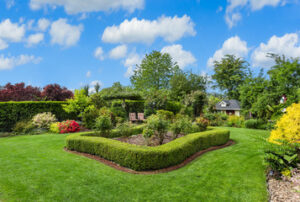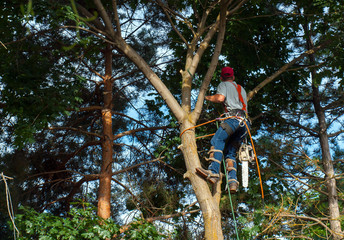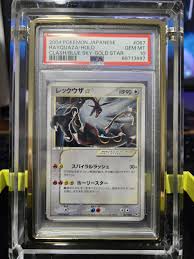Formazione Aziendale is a meeting that helps employees develop skills and knowledge. It also enhances teamwork and improves interpersonal communication.
Before your workshop starts, share an agenda with participants. This will ensure that everyone is on the same page from the beginning. You may also want to include a list of objectives for the session.
1. Socratic Method
 The Socratic Method is a discussion-based teaching technique that focuses on questioning as a way to stimulate critical thinking. It requires people to examine different viewpoints, challenge their presuppositions and work collaboratively to come up with a solution. This approach has been shown to be effective in a variety of settings, including the classroom. It is also a great tool for business leaders, as it can help them get their team members to think through the issues and explore different options before they make decisions.
The Socratic Method is a discussion-based teaching technique that focuses on questioning as a way to stimulate critical thinking. It requires people to examine different viewpoints, challenge their presuppositions and work collaboratively to come up with a solution. This approach has been shown to be effective in a variety of settings, including the classroom. It is also a great tool for business leaders, as it can help them get their team members to think through the issues and explore different options before they make decisions.
One of the most important aspects of Socratic questioning is that it should not be intimidating. The goal is to provide productive discomfort, rather than intimidate the participants by asking questions that are designed to trip them up or reveal their lack of understanding. This is especially important when dealing with difficult topics such as morality or ethics.
Unlike lectures, which tend to create an environment of passive participation, Socratic discussions encourage collaboration and group learning. As a result, they are more likely to lead to real-world applications of the training that employees will use on the job. In addition, the back-and-forth nature of Socratic discussion allows individuals to personalize the training and connect it to their own beliefs and values.
However, it is important to remember that the Socratic Method has its limitations. It can be easy to misinterpret and misuse, leading to an uncomfortable environment in the classroom and less effective implementation of the methodology at work. To mitigate this risk, it is important to understand how the process works and how to properly execute it. This online seminar will teach you the fundamentals of Socratic questioning, as well as how to avoid questions that stifle student inquiry and thinking.
2. Interactive Discussions
The interactive discussion method can be an effective alternative to passive lecturing, and studies have shown that students learn more from this type of workshop than they do from passive lecture. In addition, students often enjoy this learning style more than lectures because it is more engaging and allows them to interact with their classmates.
However, it’s important to establish clear discussion expectations and criteria. These should be communicated to students early in the course and can be established with a rubric. It’s also a good idea to have a moderator, either an instructor or a student volunteer, oversee the discussions and provide guidance to ensure that the conversation remains focused and on-topic.
For workshops with large classes, consider dividing the class into smaller subsections of six to eight students and holding a separate but parallel discussion forum for each group. It’s also important to set a time limit on each discussion and use an electronic tool to track when the allotted time is approaching so that participants can refocus their attention as needed.
Learn how to design nature-based corporate workshops that inspire innovation and foster creativity in the workplace. From examining the impact of nature on creativity to designing interactive activities and encouraging mindfulness through nature immersion, this course will give you the skills necessary to lead transformative nature-based corporate workshops for your clients.
3. Rhythm
Rhythm is the core of music. Without it, all of the scales and special techniques in the world won’t sound right. You can be a skilled musician but if you have terrible rhythm no one will listen to your music. It’s the same for business – you can have great processes and systems but if your teams don’t operate with a clear, consistent rhythm they will struggle to keep up with your goals and deliver on what they say they will.
There is a significant body of research suggesting that predictive processing in rhythmic experience (e.g., beat-based processing) is a key aspect of rhythmic abilities and that they are linked to cognitive-motor skills. Further empirical studies are needed to precisely investigate these relationships including experimental designs that directly measure predictive processes in rhythmic experiences and that use samples with atypical development to evaluate whether there is a causal relationship between rhythmic abilities, predictive processing, and cognitive-motor skills.
Rhythm is our corporate workshop and team building program that helps teams to develop and execute their work in an aligned, focused way. It’s a proven and engaging way to build trust and confidence, improve communication, increase collaboration and productivity in the workplace.
4. OKRs
OKRs are an effective goal-setting framework that can bring clarity, focus, and alignment across teams. They are a good choice for high-growth companies where change is constant and objectives need to be continuously adapted. However, like any tool or methodology, it requires dedicated commitment and ongoing effort to be implemented successfully.
One key challenge of OKRs is ensuring that progress is easily tracked and that everyone understands what needs to be done. Ambiguous language and lack of clear metrics can lead to confusion and misalignment. To overcome this, ensure that Objectives are clearly written and that Key Results are specific and measurable. Also, replace subjective language such as “improve” or “enhance” with quantifiable metrics, such as percentages, dollar values, or specific milestones.
Another challenge is getting buy-in from the team and ensuring that objectives are relevant and attainable. To overcome this, ensure that all members are involved in setting OKRs and that they are communicated regularly. This fosters transparency, a collaborative culture, and accountability. It also enables employees to take risks and push themselves beyond their comfort zones, without fear of negative impact on compensation.
In addition, it is important to train and educate leadership on the benefits of OKRs. Unless leaders are fully committed, the framework is unlikely to gain traction across the organization. Finally, if goals are set too ambitiously or if teams are unable to meet their OKRs, it is important to address these challenges immediately. Reevaluate and adjust objectives based on performance, feedback, and the business environment. This will help prevent a loss of momentum and will help to avoid a common pitfall of the OKR methodology: a false sense of accomplishment that ultimately demotivates employees.
5. Flexibility
A flexible mindset makes it possible to adapt to changes as they occur. It allows leaders to handle management issues with the same level of efficiency and effectiveness regardless of whether plans change or a team member departs, for example. It also helps them to avoid putting up walls around themselves and their colleagues by refusing to be open or collaborative.
When it comes to running workshops, flexibility isn’t just about how sessions are run but the methods and tools used. For example, visual, spatial and creative people enjoy working with flip-charts, coloured marker pens, post-it notes and face-to-face discussions. Logical, numerate and process-oriented teams are more comfortable using a computer and structured planning tools.
Workshops can be used to tackle any business or organisational challenge and are particularly effective for tackling complex problems, managing change and creating initiatives, plans and actions that help achieve a particular aim or goal. They can also be a great way to improve communications within and between departments and teams and facilitate the development of strong leadership abilities.
Incorporate these workshop techniques into your next meeting and see the results for yourself. You can even use a Learning Management System (LMS) to manage the content, assessments and quizzes for your workshop participants. This frees up your time to focus on facilitation and provides you with the ability to track participant progress throughout a workshop and beyond.













 It is important to have your grease traps/grease interceptors pumped out regularly. This will help prevent costly plumbing repairs and reduce odors.
It is important to have your grease traps/grease interceptors pumped out regularly. This will help prevent costly plumbing repairs and reduce odors.